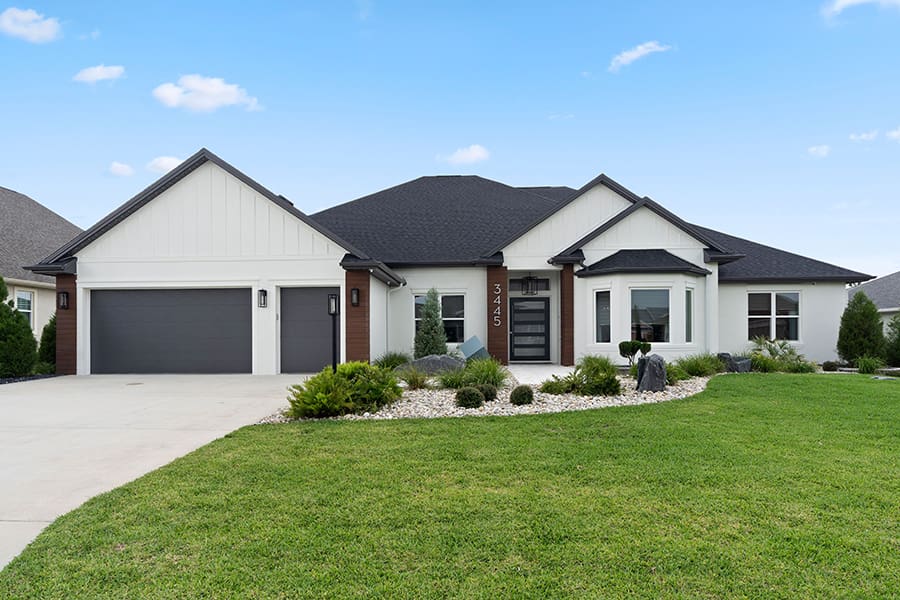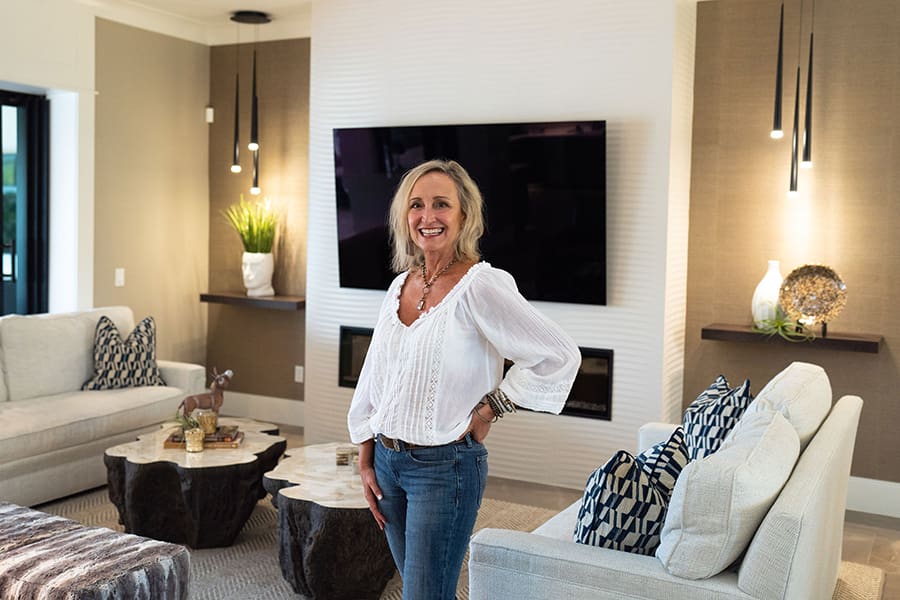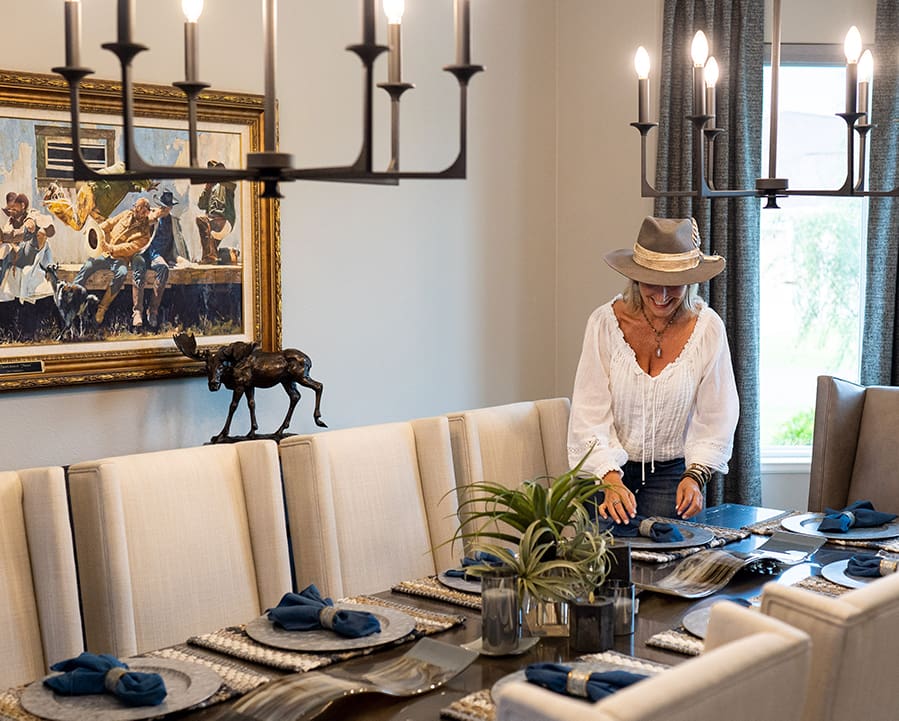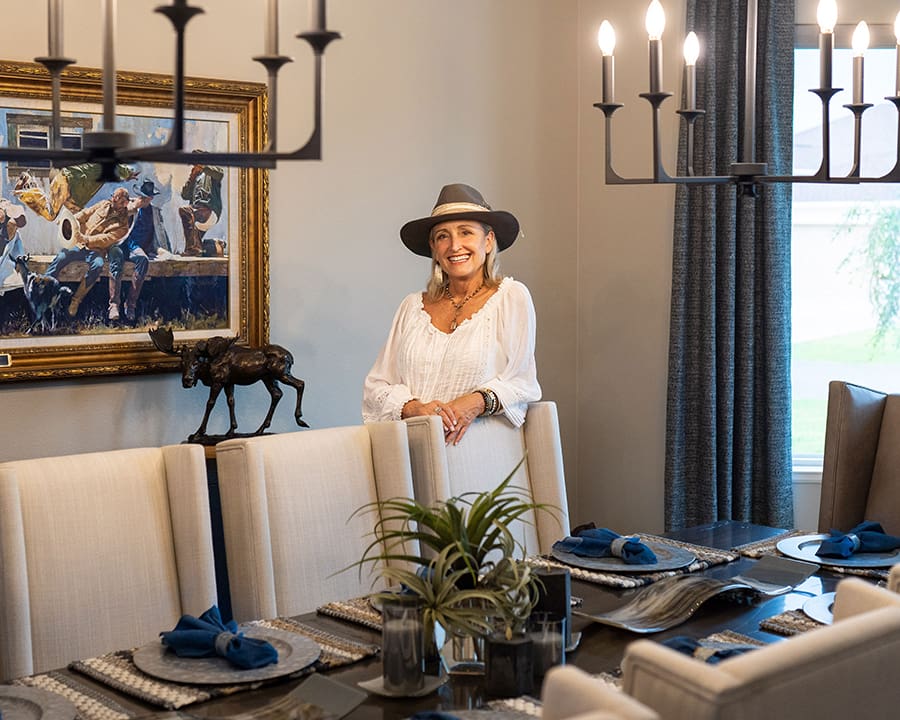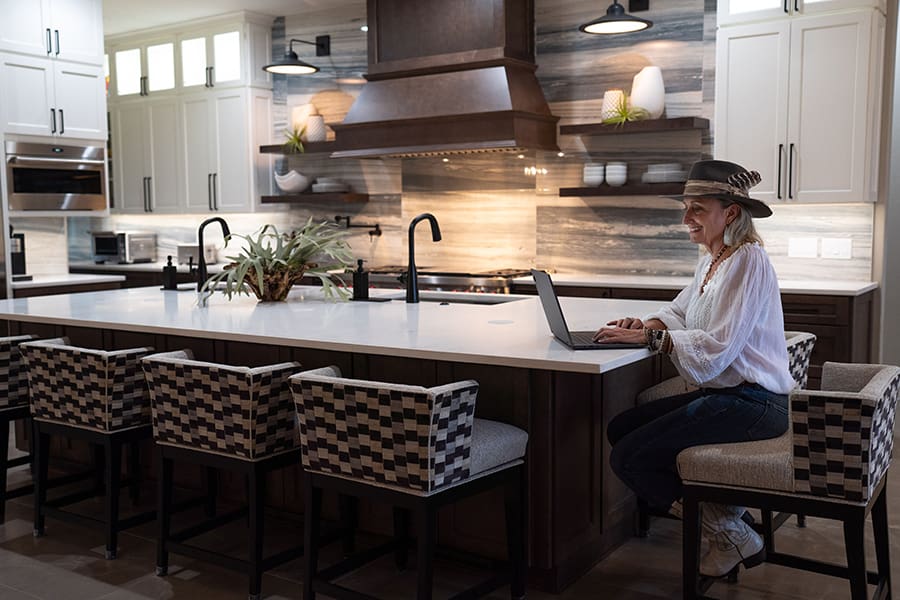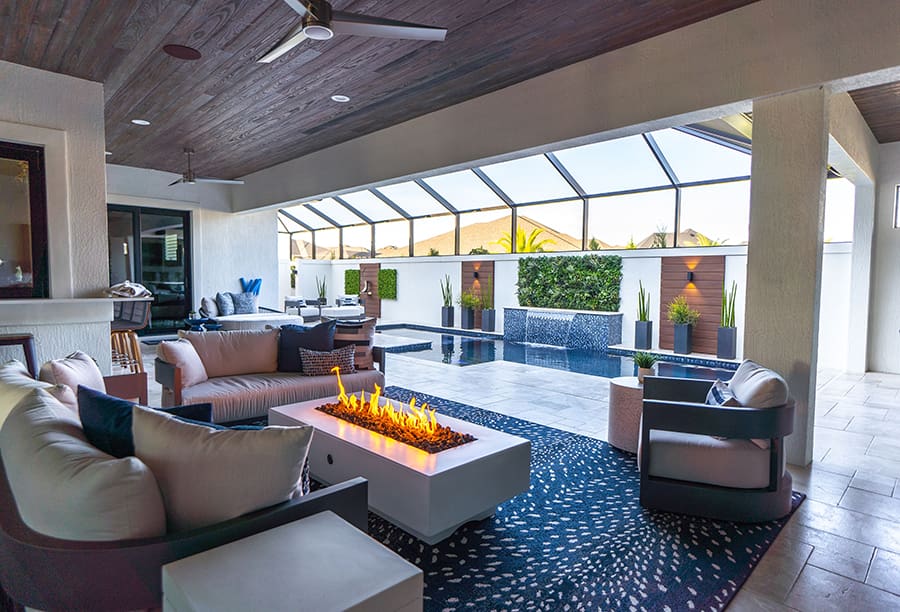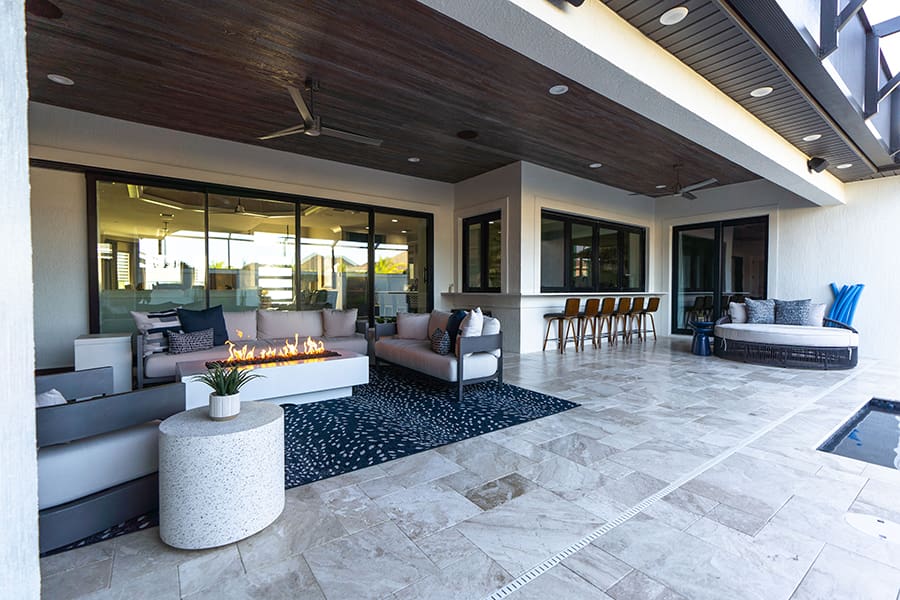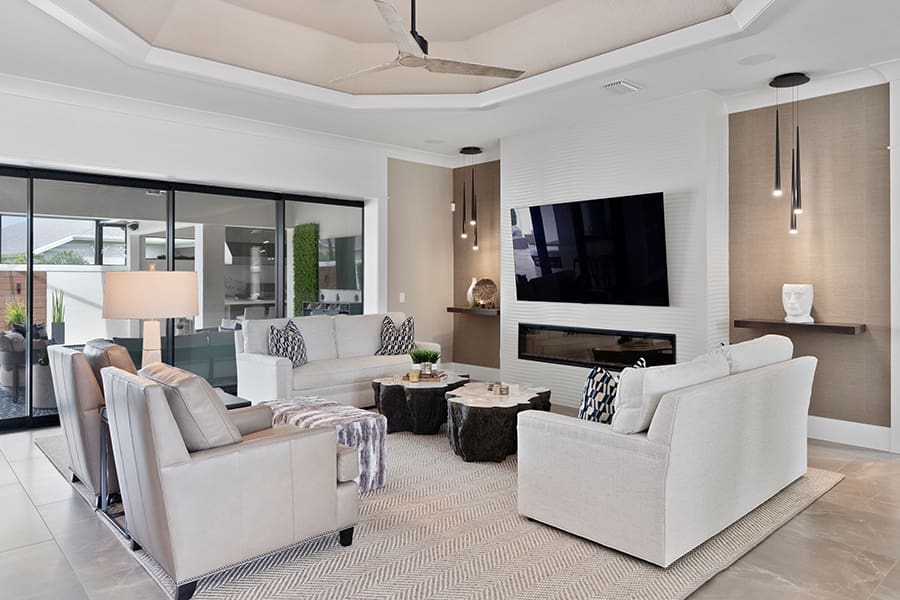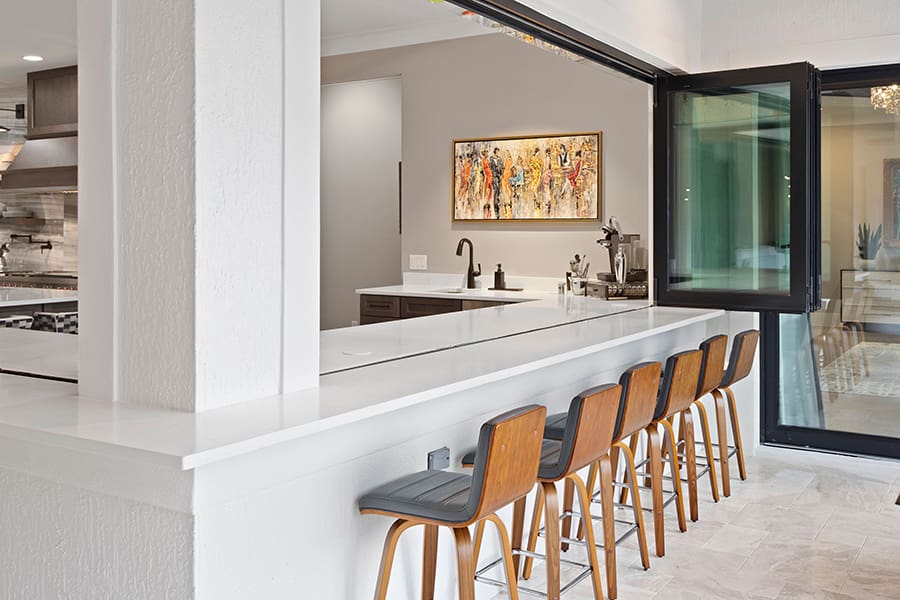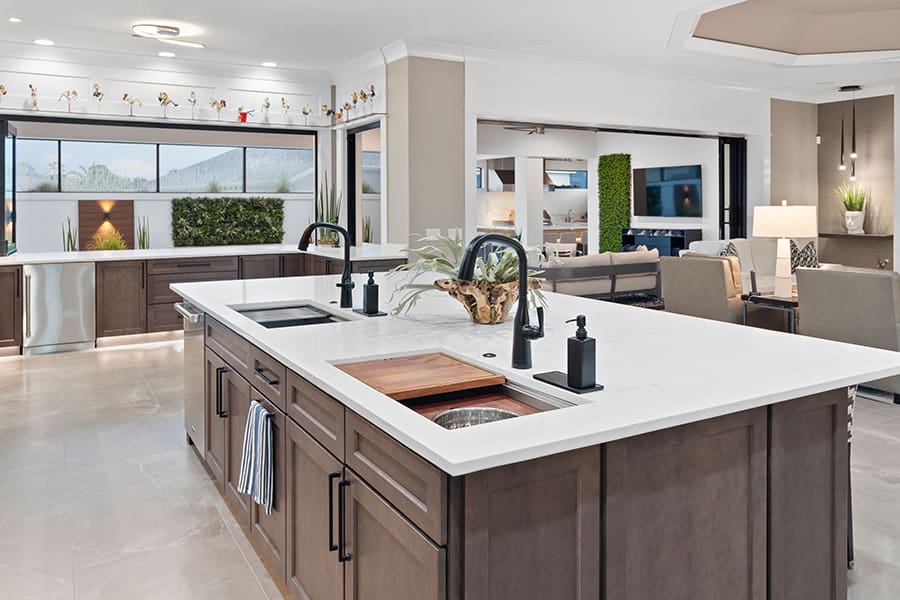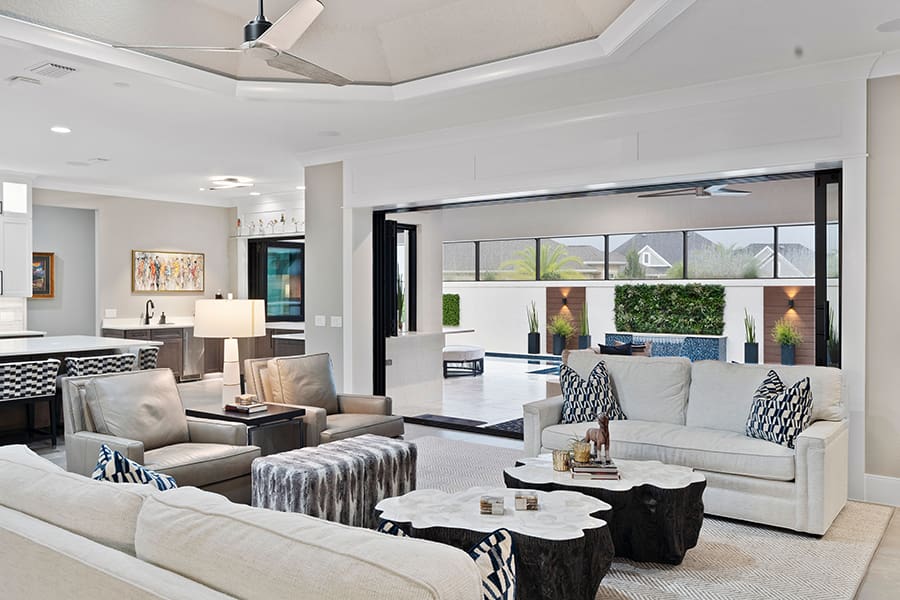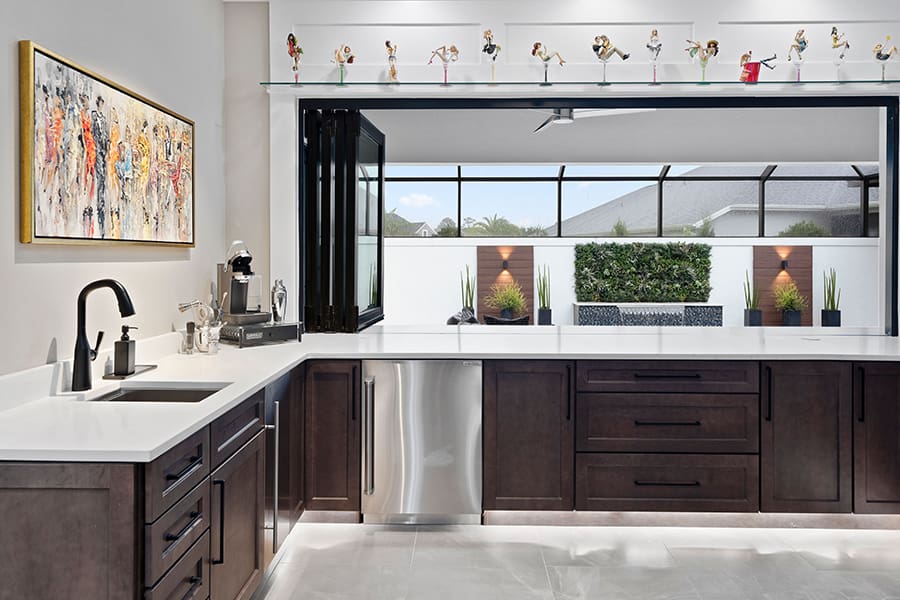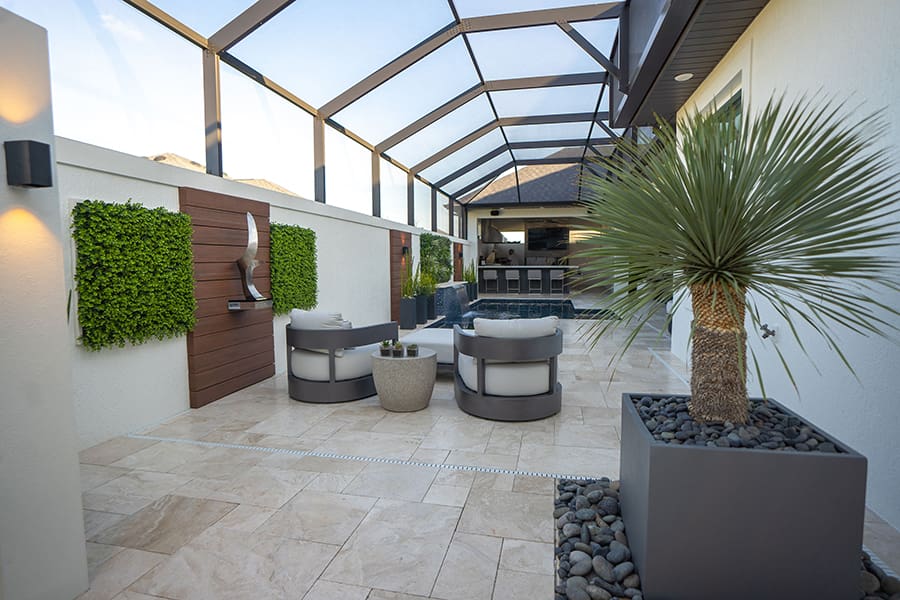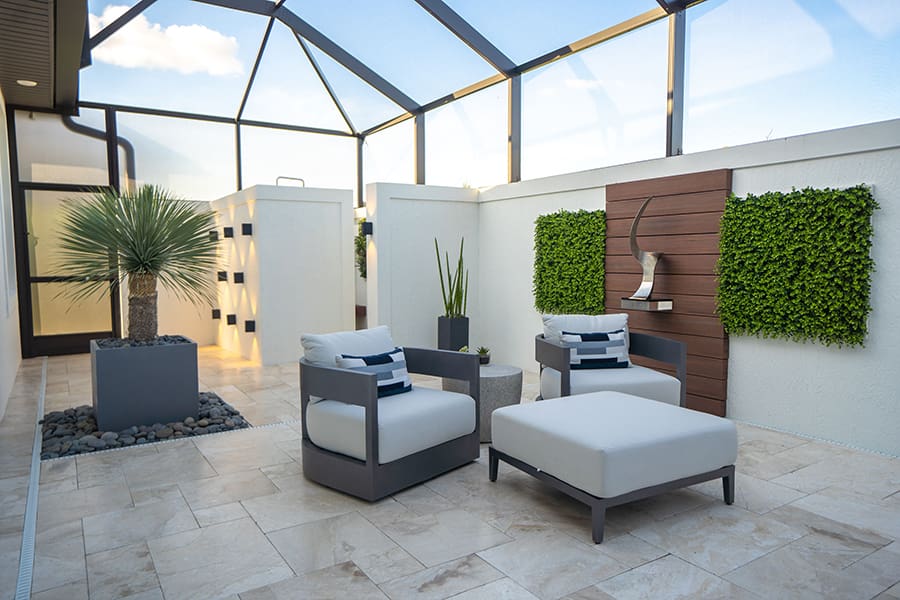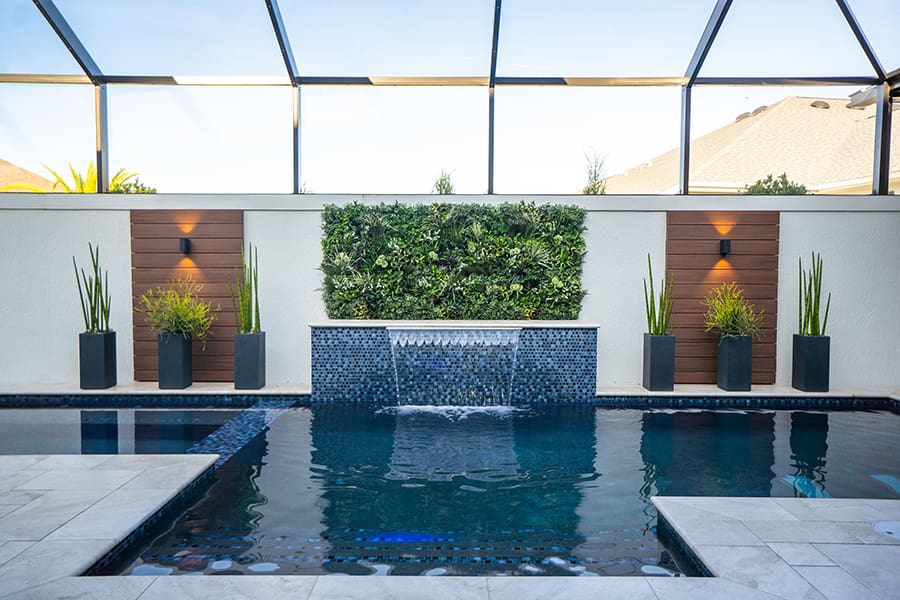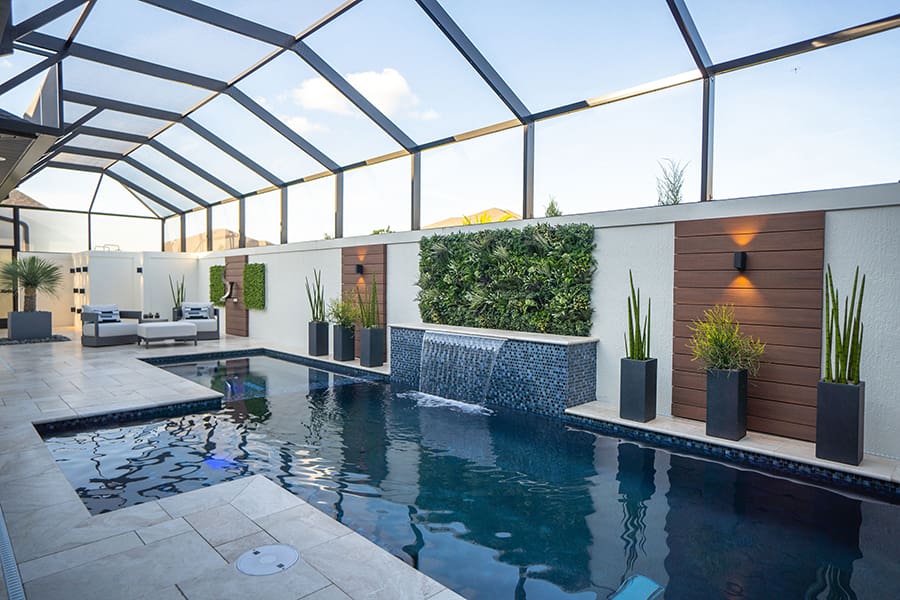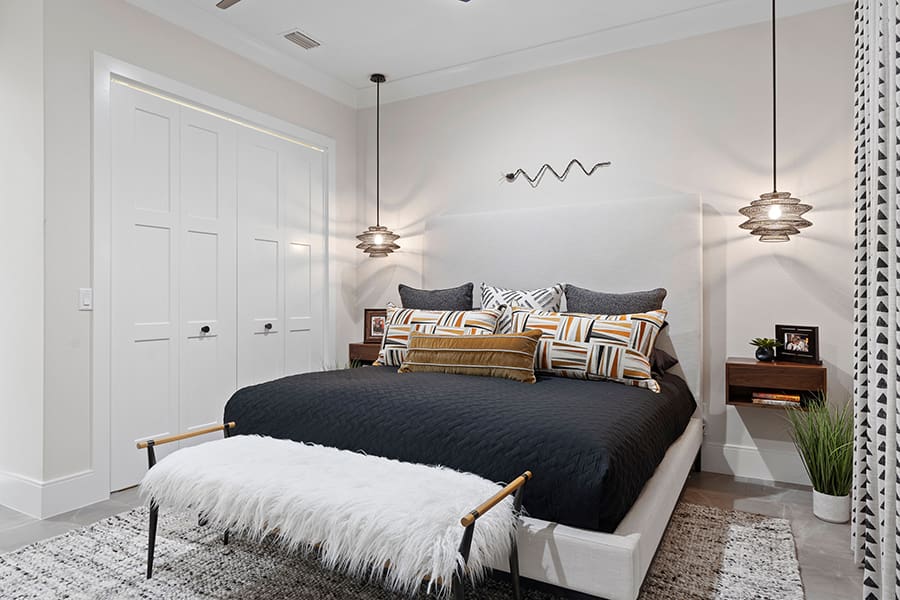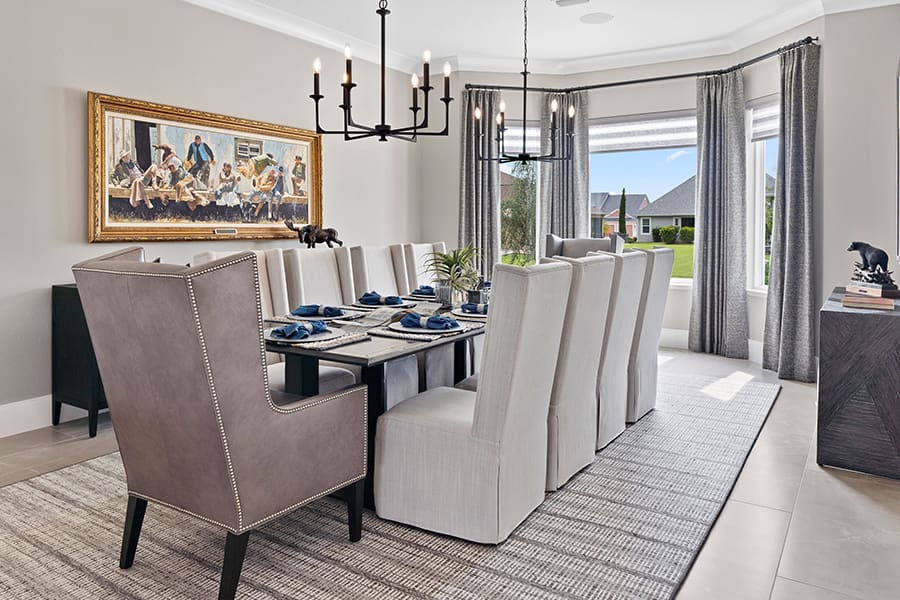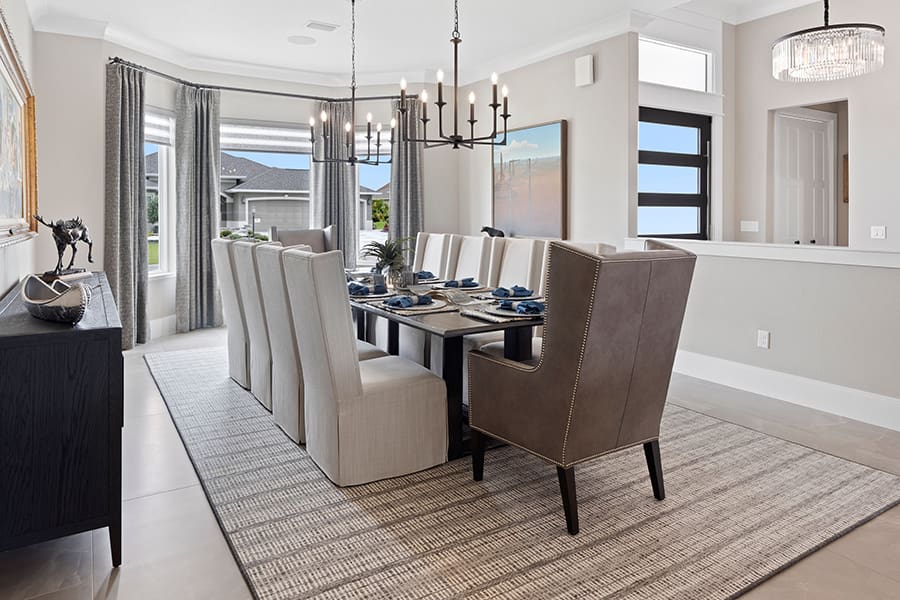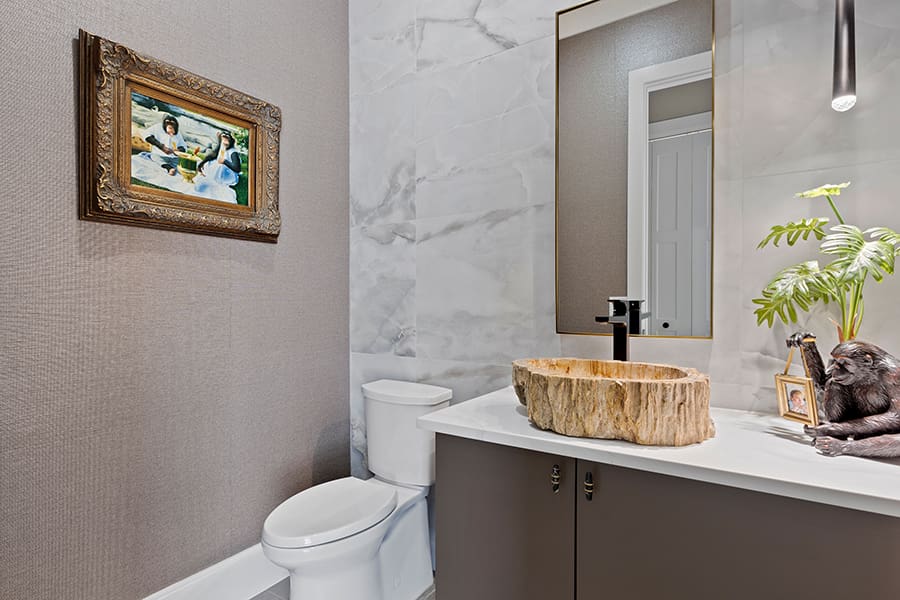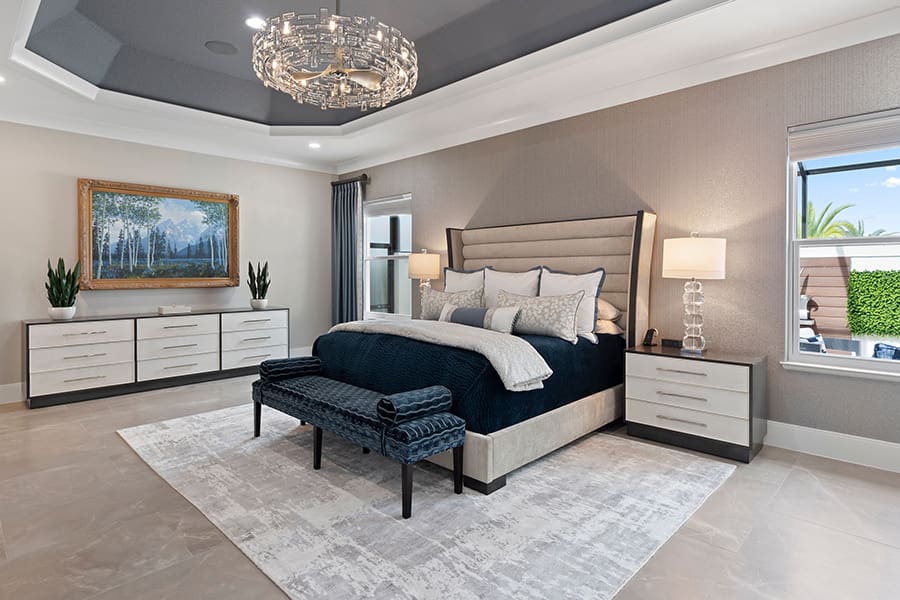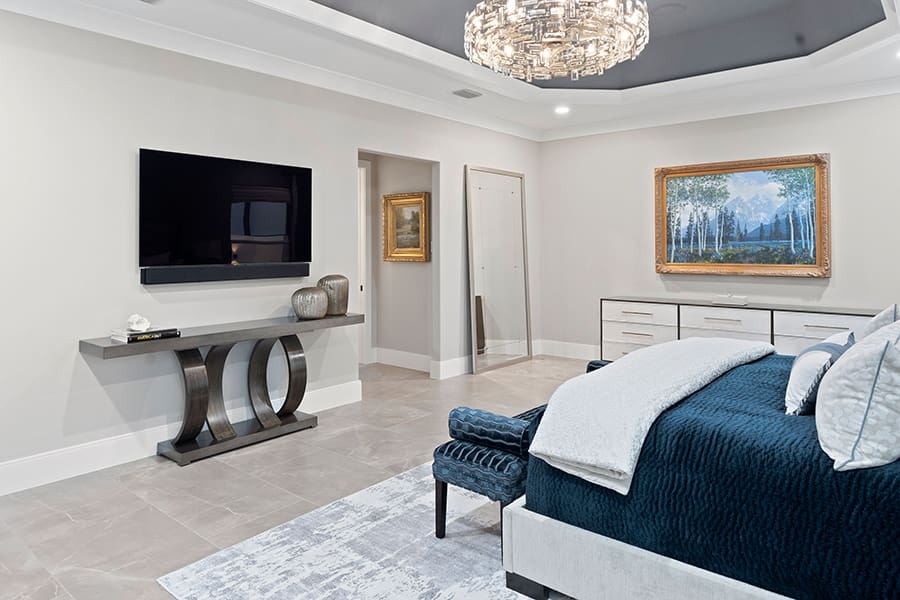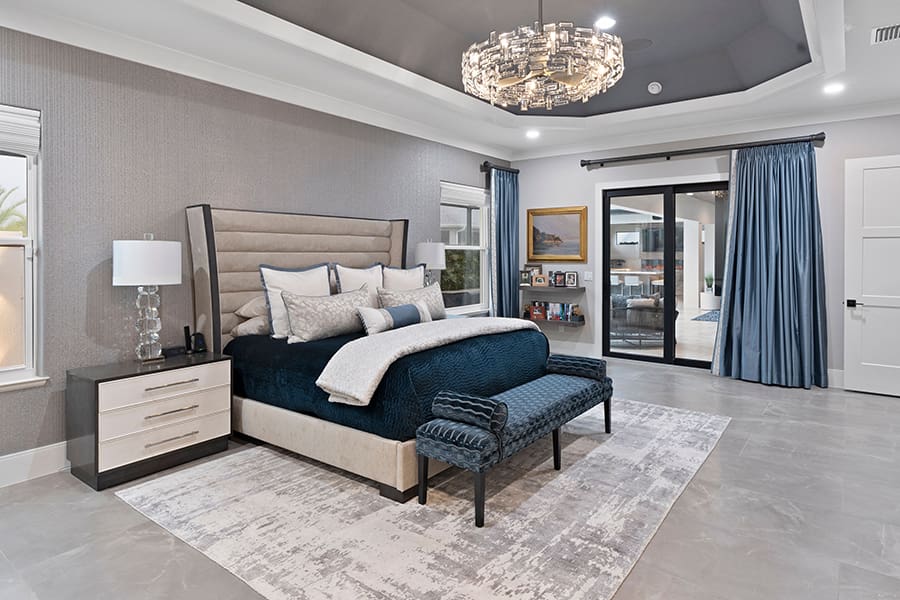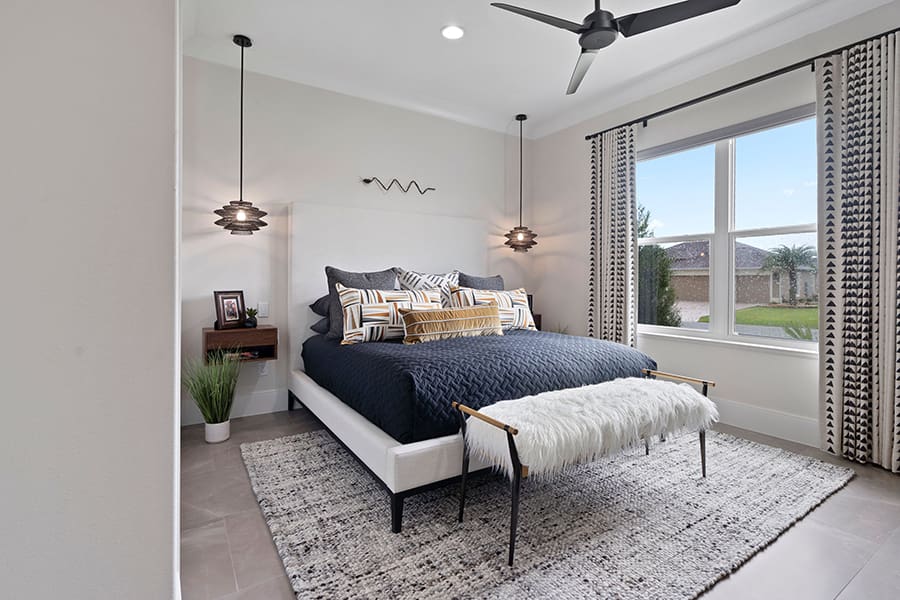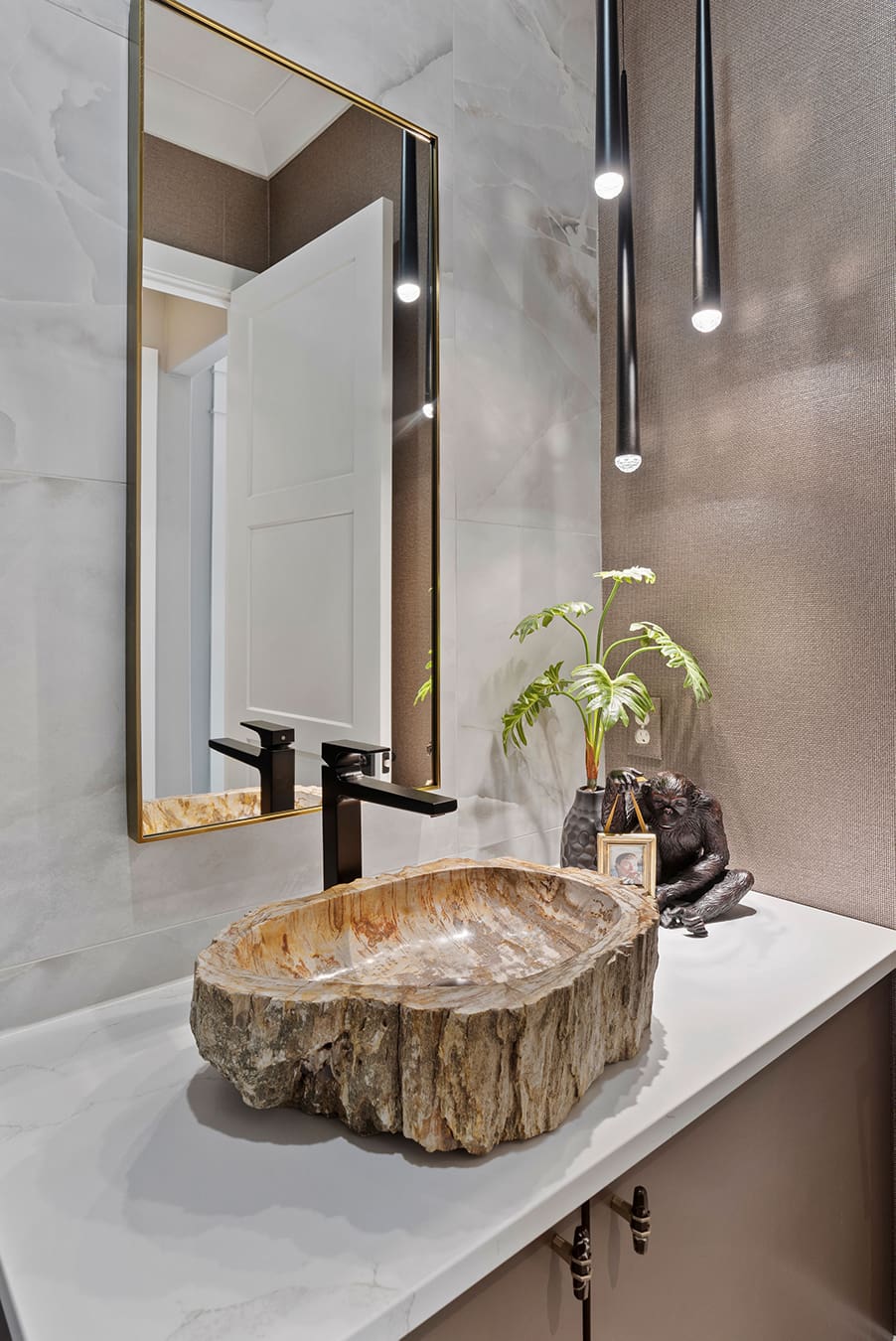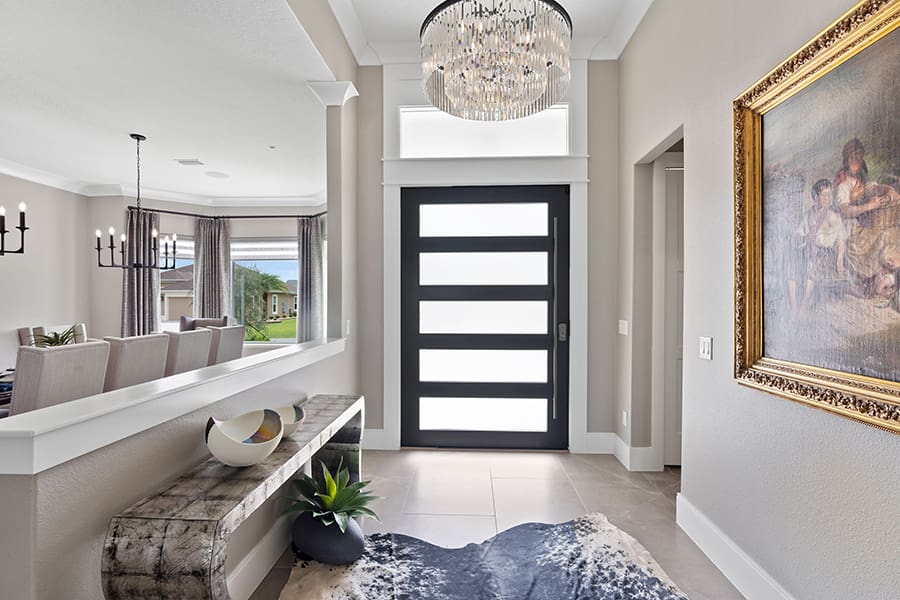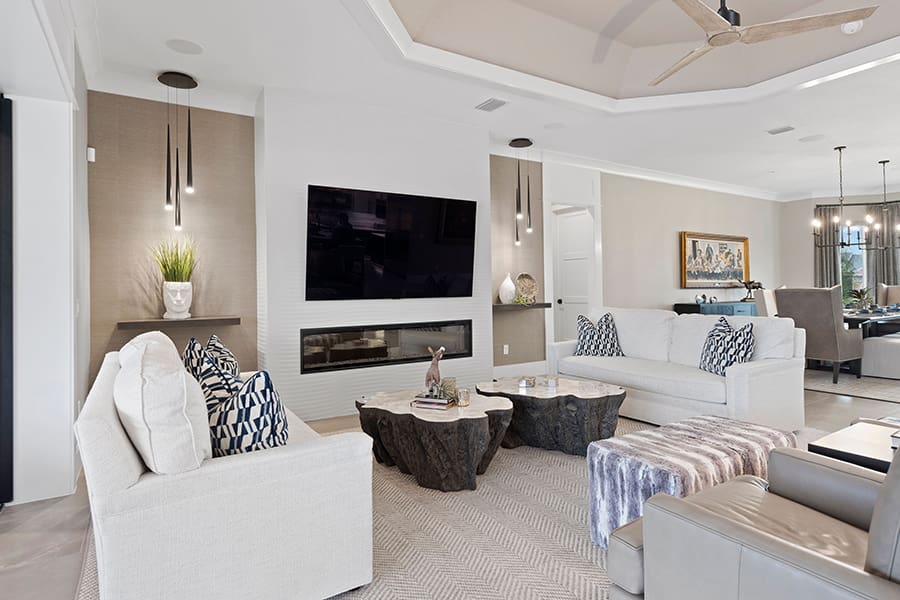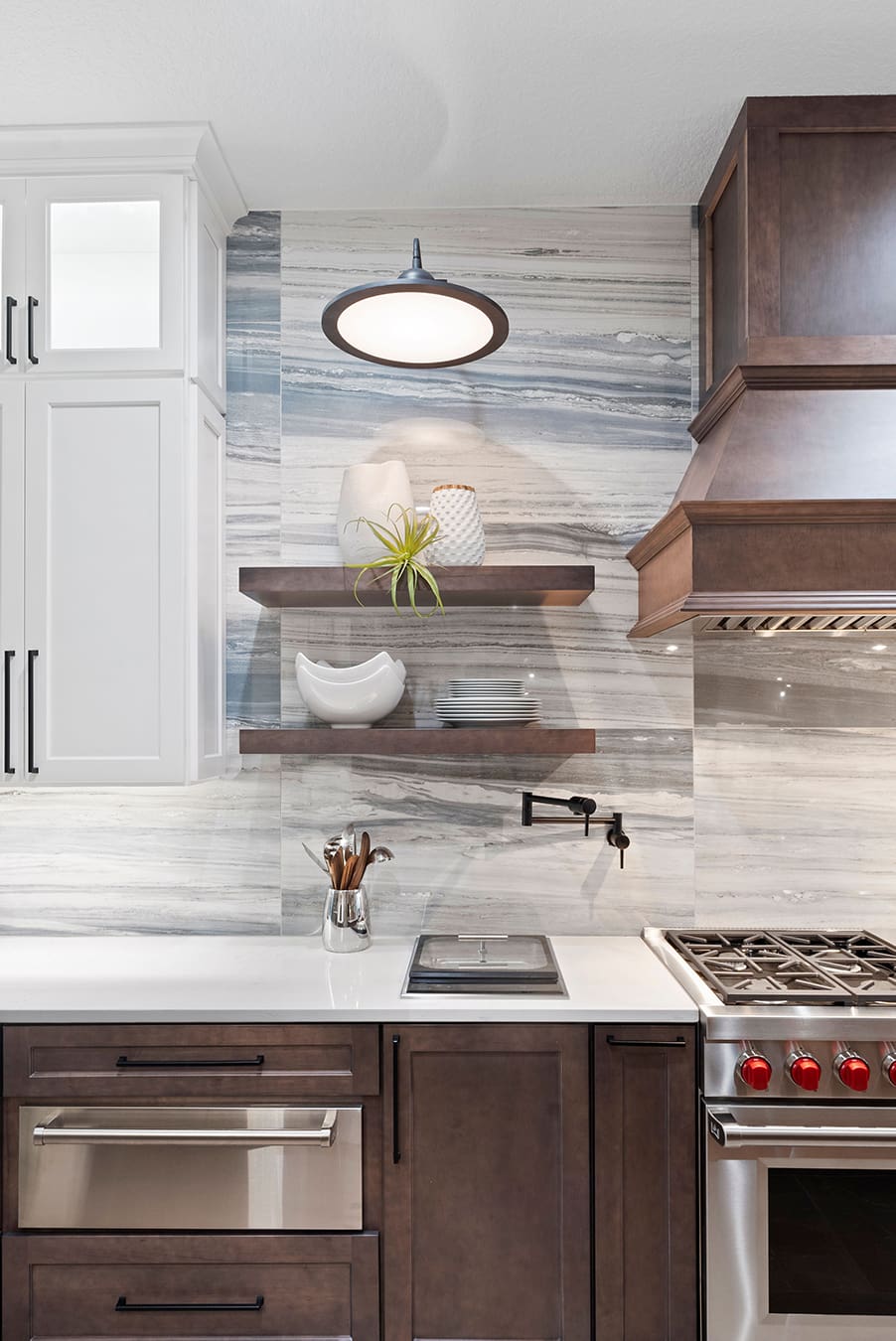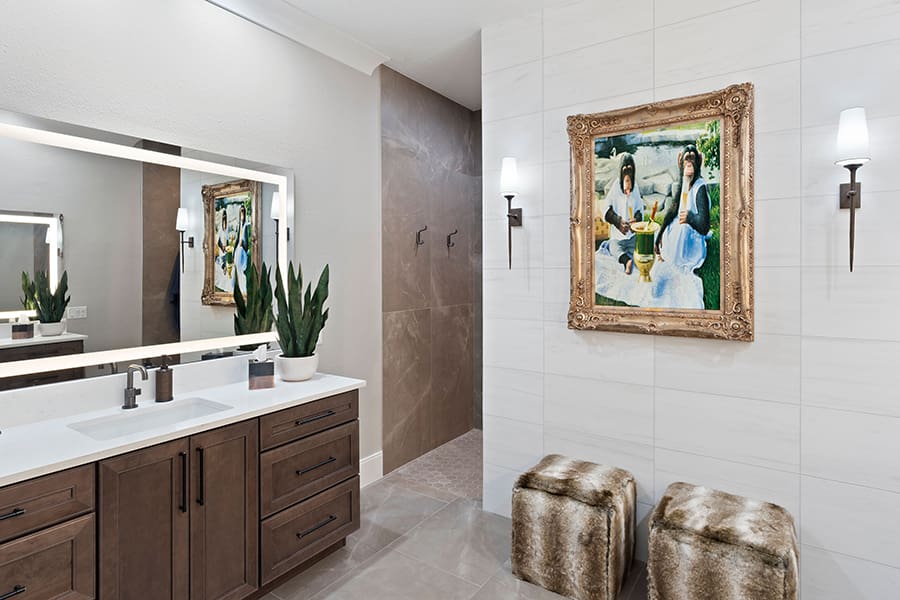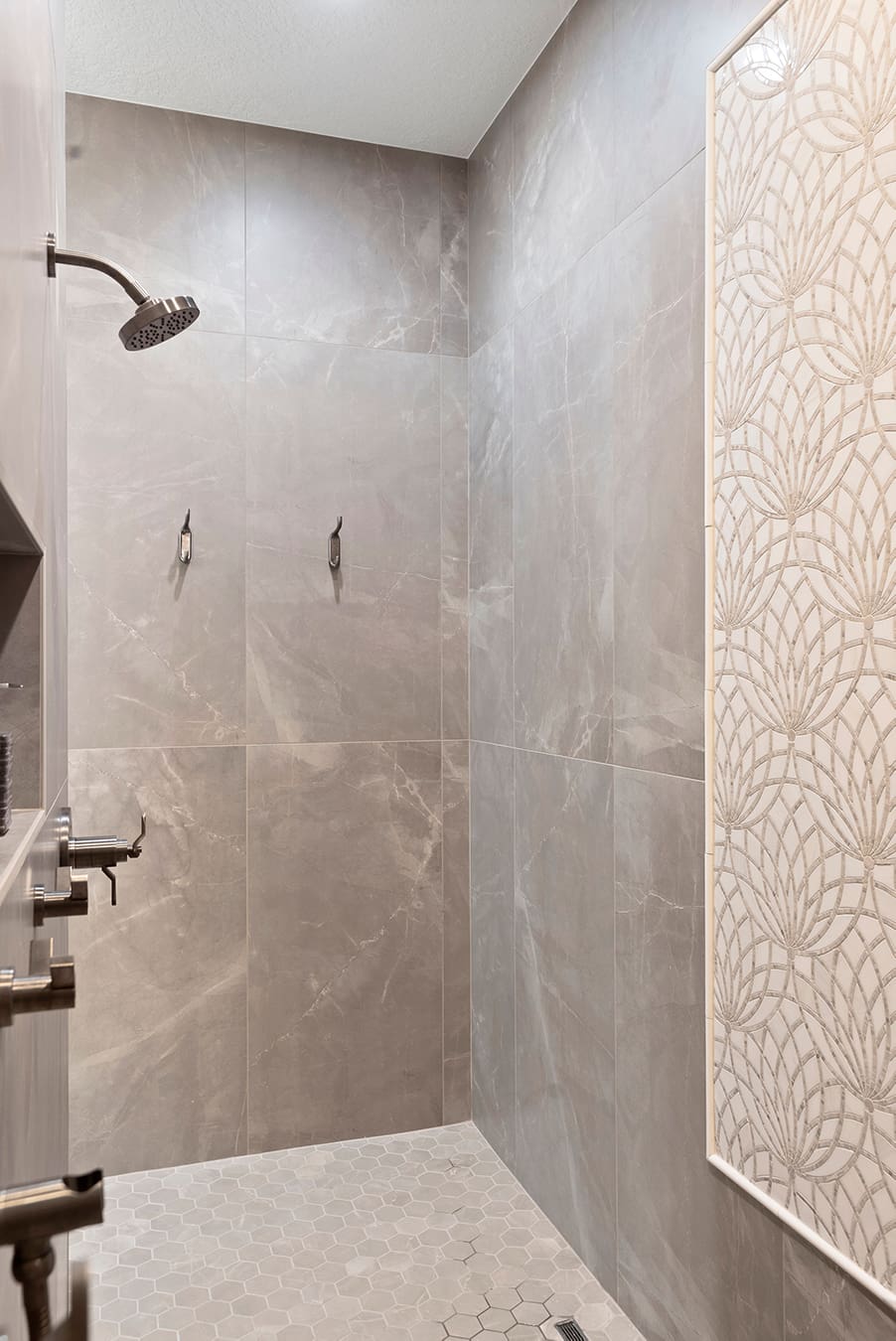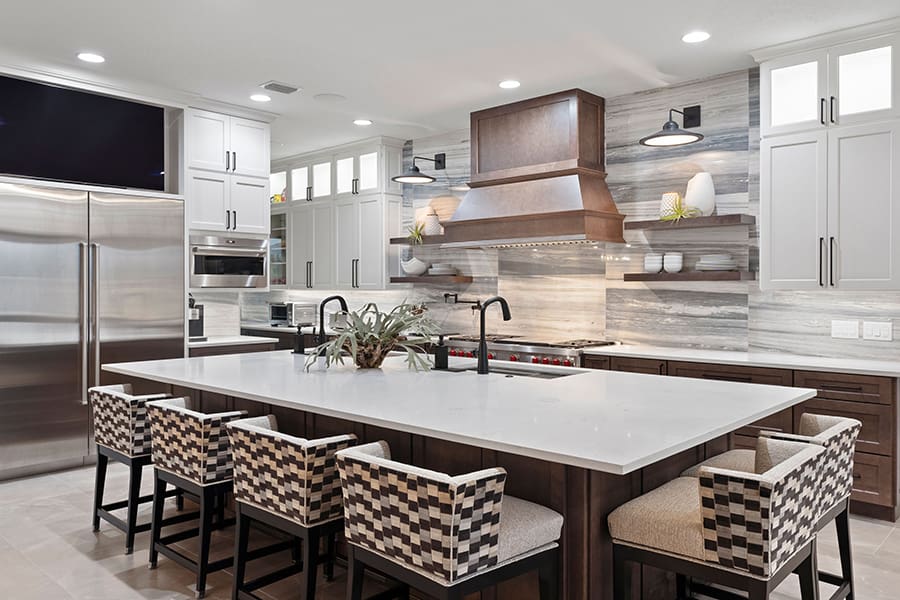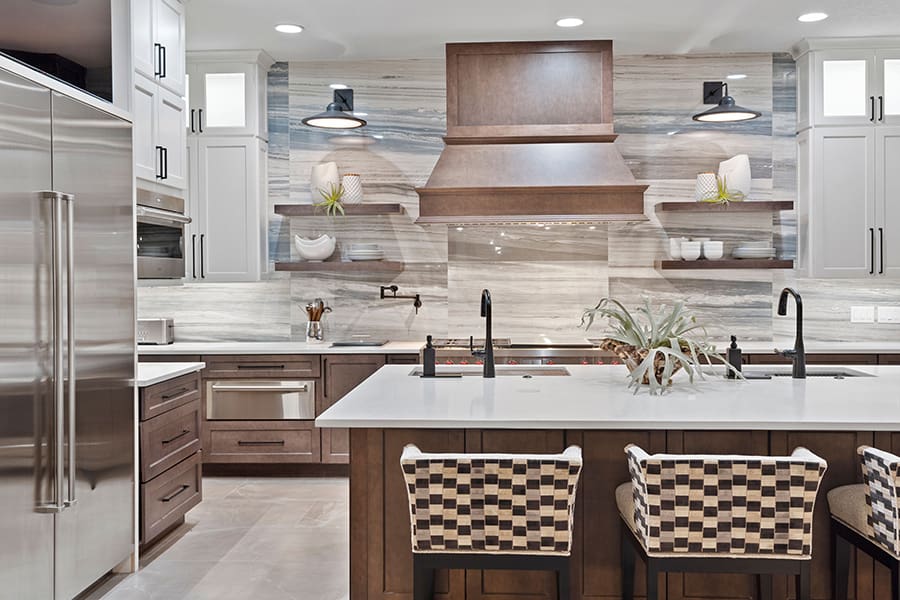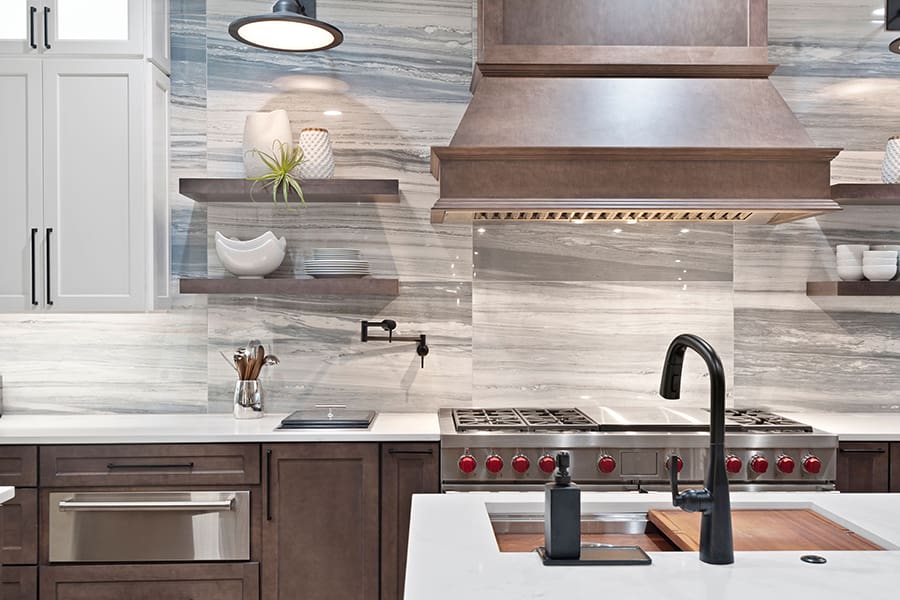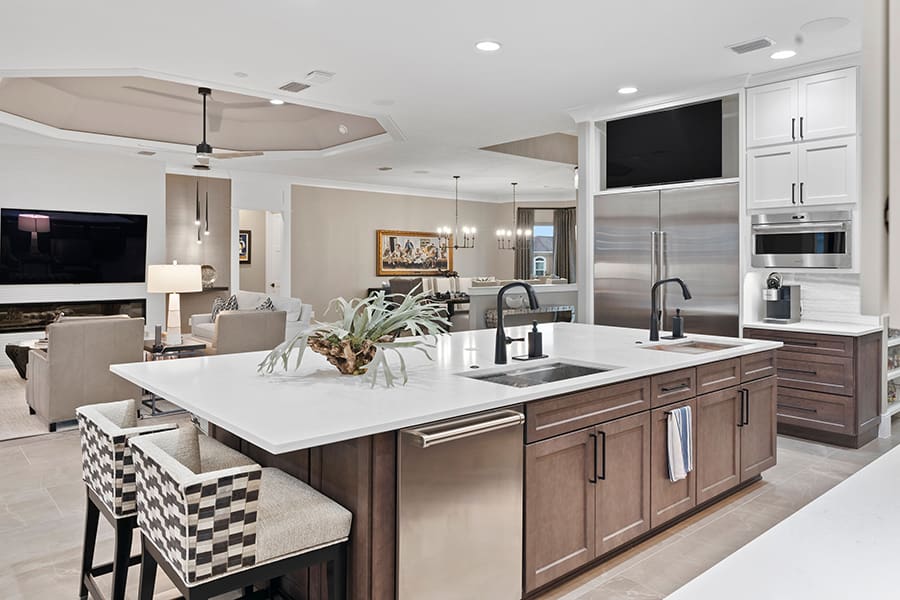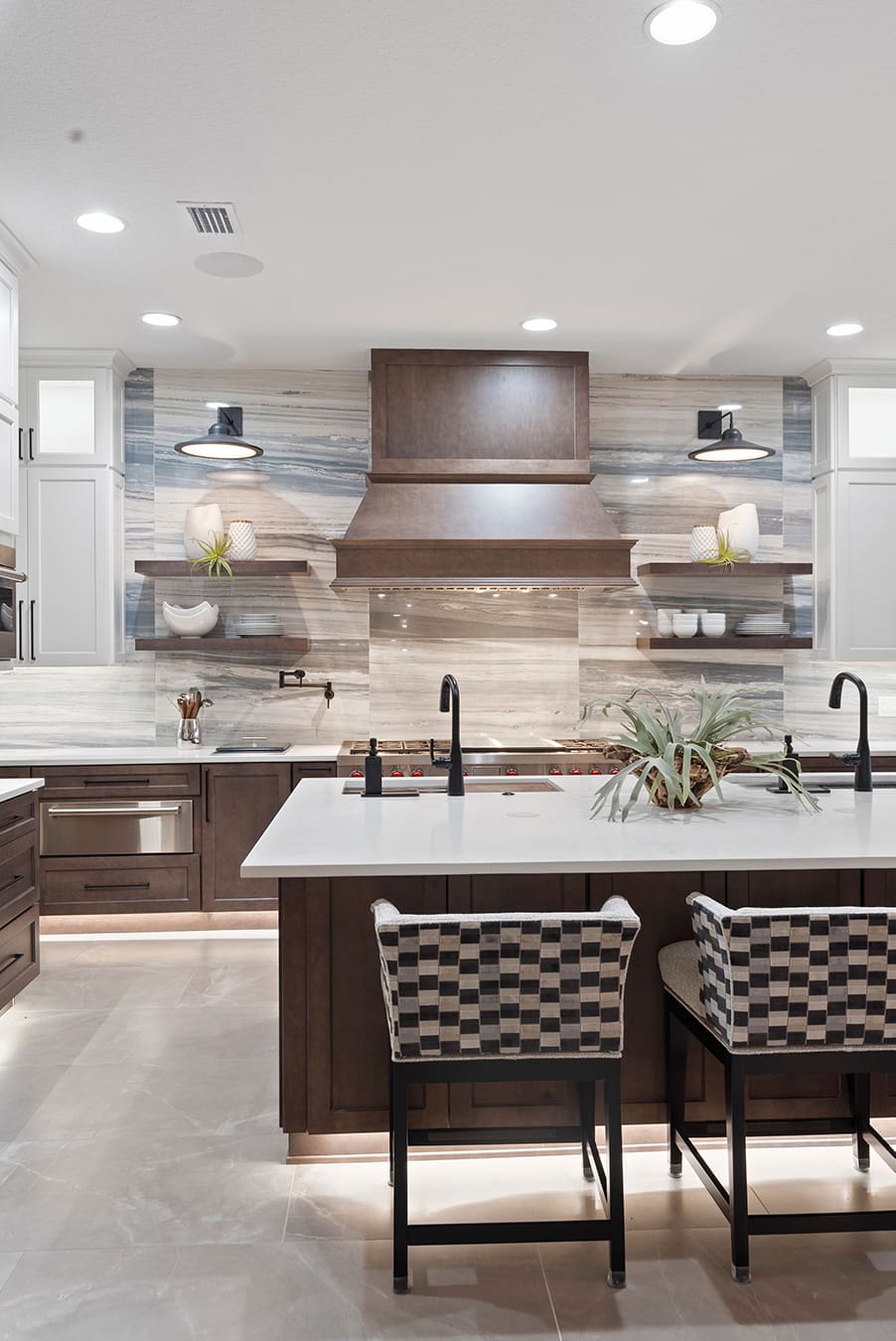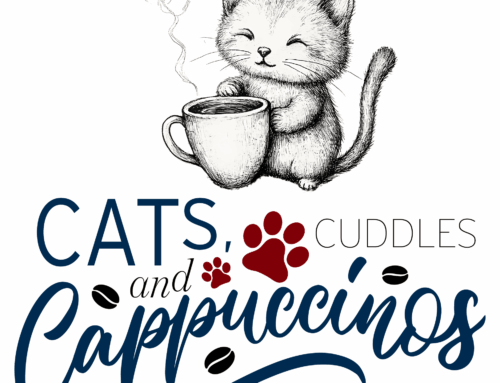
By Roxanne Brown
Bridging Indoor and Outdoor Living Trends in 2024

Bridging indoor and outdoor living trends in 2024.
In the dynamic world of home design and renovation, the fusion of classic and modern elements continues to define the evolving concept of home — both indoor and outdoor.
Inside, flooring, kitchen cabinets and decor trends add layers of style and functionality to living spaces.
Outdoor trends are creating personalized, functional and visually stunning spaces that seamlessly integrate with natural surroundings. Light whites and earth tones dominate outdoor structural elements, allowing homeowners flexibility for customization.
To learn more about the vivid, evolving landscape of interior and outdoor design, we turn to experts Susan Corsten, owner and interior designer/decorator for Susan Corsten Interiors, and Stan Hawley, lead designer for Artisan Outdoor Living.
Join us on a visual expedition through the trends shaping the homes of today and tomorrow, where each facet contributes to 2024’s best features for homes.
Blurring the Lines: Indoor/Outdoor Living
Susan says a prevailing home trend is blurring the lines between indoor and outdoor spaces. Many residents, particularly those relocating from the north, seek a seamless merger of these environments.
“The weather and the lifestyle in Florida is definitely a motivator, so there’s lots of interest in making outdoor and indoor spaces cohesive,” Susan says. “People want to have spaces for entertaining, and even for themselves, but the point is they want to have things effortlessly flow from outside to inside.
“At this point when I’m picking interior colors, we’re also looking at the outside color of the house and how it relates to the inside. Sometimes it’s even the same color, so we just start to blur that line,” she adds.
Stan concurs.
“Making those outdoor spaces usable and like an extension of the inside is what people want. They want the inside and the outside to work together,” he says. “If someone has a style inside like traditional, contemporary, Mediterranean, Italian rustic, you name it, you could flow with it right to the outside.”
Additionally, Susan shares her experience with clients who yearn for a resort-style living experience in their homes by incorporating outdoor showers and other functional features that enhance a connection with nature.
“There’s an interest to be connected to the outside as much as possible,” she says.
Stan notes that the growing trend of turning outdoor spaces into captivating havens is driven by the desire to create inviting spaces for relaxation, entertainment and meditation.
“At Artisan Outdoor living we basically specialize in turning boring spaces into beautiful spaces,” Stan says. “The trends that started through COVID that involved bringing entertainment spaces to homes’ outside spaces are continuing because people became used to spending more time at home.
“People are looking to pool seating areas, spaces for entertaining, whether it’s a group of 10 people, or 40 or 50 people. We have one house where the owners wanted space for an outdoor golf simulator. It’s going to be a covered space where they can actually golf, with space for dining, gathering and socializing. The nice thing is there’s options there for every budget and for every style preference.”
Stan agrees that the trending demand for outdoor showers and tubs is growing, but he’s also seeing people planning space for meditation, relaxation and yoga.
“It’s more of trying to create their own destination, almost like a staycation kind of a space,” Stan says.
Designing for Different Lifestyles: Lifestyles and Native Plants
When it comes to outdoor spaces, it’s all about personalization. Visually appealing gardens of native plants in efficient, low maintenance designs are gaining popularity.
Stan says many families want easy spaces that are easy to maintain for their active young children.
“They would not choose so many plants or a big garden, but maybe just mulch or grass,” Stan says.
And in The Villages, Villagers interested in an active lifestyle favor low maintenance gardens and outside spaces.
“Native plants have become very popular and are definitely trending,” Stan says. “People are looking for plants that are already adapted to the climate and that they know will perform well, that don’t require a lot of care.”
Pools, Enclosures and Lighting: Enhancing the Outdoor Experience
Stan notes that there’s a diversity of pool preferences, from simple to comprehensive designs with water features and entertainment spaces. Durable and climate-appropriate materials, such as engineered wood for decking, are recommended to enhance outdoor spaces.
“Folks tend to stay pretty simple with pools, but the nicest thing now is that in lieu of a traditional pool install, which can go on for many months, there are plunge pools, a solid concrete pre-made pool than can be fit into smaller spaces and that can be turned around in no time,” Stan says.
Still, many people want all the bells and whistles.
“We’re actually working with a client now that wanted an outdoor entertainment space for 40, 50 people dancing, a band to play pretty much everything, so we designed a cut-in pool with some ledges and it’s got the waterfalls, the fire features and everything you can think of,” Stan says.
Additionally, pool enclosures and lanais provide expansive views and act as a barrier from mosquitos and other bugs and insects. Many structures feature retractable screens, comfortable seating, and innovative lighting to enhance the overall experience.
“It used to be that with lanais there were aluminum posts everywhere; it just sort of looked and felt like a cage,” Stan says. “But with newer screen choices now, you can have huge sections of lanai where all you have is just the screen, so your views are much nicer. You don’t have all the distractions of framing yet it’s still just as durable as the old style.”
Performance Fabrics and Simplified Decor: Comfort Inside and Out
Susan emphasizes that performance fabrics originally designed for outdoor use are now making their way indoors, particularly in kitchens and dining rooms. Why? Because they’re easy to clean and easier to keep dry.
“There are furniture manufacturers that historically have been just indoor furniture, but now they are doing outdoor furniture as well. Fabrics have come such a long way,” Susan says, explaining that people lean into furniture for performance fabric because it’s so versatile.
“Whatever the style; traditional, non-traditional, modern, classic, it’s outdoor fabric and ready to sit outside, but I’m using indoor/outdoor fabric inside too, like in the kitchen for barstools and in the dining room for sofas,” she says.
The new year also brings trends toward simplified décor. There’s a definite shift towards fewer accessories and larger, more impactful items that embrace the concept of quiet luxury.
“People, especially younger generations, don’t want as many tchotchkes (knickknacks) or lots of accessories; it’s just more to dust,” Susan says. “People are going for simple, clutter free spaces with not too much stuff, but instead, fewer, bigger and more impactful things.”
Colors: Embracing Warm Neutrals and Earth Tones
Popular color palettes are dominated by warm neutrals and earth tones inspired by the desire to bring the outdoors in — colors like warm beige or brown neutrals, greens and blues.
“They resonate with the natural elements of Florida’s landscape,” Susan says. “I think the national trend says brown is coming back and blues are still strong. We’ve seen blues for a while, but many variations are being named colors of the year.
“Other popular colors are any earthy colors; not really gray, but gray beige going into warm neutrals and browns, which I think, again, really works here where we’re trying to blur the inside and outside. People are thinking about the blue skies, the greenery, the brown earth or palm tree trunk,” she adds.
According to Susan, people are looking for “simple, but comfortable.”
She says that white walls are not as inviting or as comfortable as warm, neutral colors.
Meanwhile, Stan says outside color choices have been trending light for a while.
“Light colors are always popular, especially here in Florida. Dark colors will fade much faster. And so, you’re going to have a lot more expense in having the house repainted more often when you choose darker colors for the body of the house,” Stan says. “We are seeing an increase in light whites and super light earth tone neutrals.
“That seems to be something that’s gained some popularity, and that’s probably part of the reason that it is easier to maintain over time. You don’t have all the fading issues with the paint so that makes it a little easier to get some extra life and value out of it,” he adds.
New Traditional: Merging Modern and Traditional Elements
Susan has coined the design term “new traditional,” which combines warmer traditional elements with modern simplicity. This design approach creates inviting and comfortable spaces that strike a balance between warmth traditional styles and clean lines of modern design.
“The style for a while has been more of a modern look, like clean lines, straight, simple, not a lot of carving or stuff on wood pieces,” Susan says. “But if you look way ahead to current trends, it’s swinging back to more traditional. I’m calling it the new traditional, so we may have more of the warmer woods and boucle fabric, which is kind of a classic texture fabric we’ve seen for a while but it’s being used on modern furniture.”
According to Susan, people are moving away from chrome, lacquer, black leather and shiny surfaces. They’re more into inviting and comfortable pieces… as long as the items are non-traditional. So, none of those carvings and inlays on legs of tables and chairs.
“We’re taking the edge off modern and merging the modern traditional. People want their guests to feel welcome and they want their home to almost give you a little bit of a hug,” she says.
Fireplaces are extremely popular for that very reason, whether they actually heat a room or not.
“Fireplaces are nice for taking the chill out of a room on a cool morning or evening, but they are just nice atmospherically if you’re entertaining or if it’s the holidays,” Susan says. “What’s really popular are linear fireplaces. They might be six or eight feet wide, but only like 15 inches tall and most of the time, they’re electric.
“You may not think of fireplaces in Florida, but a lot of the people that come here are snowbirds, so they miss that type of comforting element. A room looks cozy just by having a fireplace.”
Same thing with flooring and kitchen cabinet trends, which showcase a blend of classic and modern styles.
Hardwood flooring remains timeless, but sustainable and eco-friendly options have surged in popularity. Engineered wood, luxury vinyl and terrazzo flooring are also gaining traction due to their durability and aesthetic appeal.
As for kitchen cabinets: Clean lines, minimalism and functionality are trending. Matte finishes providing a sleek and contemporary look and natural wood tones are in vogue. Open shelving and smart storage solutions are integrated for both style and practicality.
Lighting as Art: Making a Statement
Lighting takes center stage as a sculptural and artistic element in modern homes, with a return to statement lighting. The “fandelier”— a fan and chandelier combination — exemplifies this trend, adding aesthetic value to functional spaces.
“Lighting is almost considered sculptural or artistic. There’s a big return to statement lighting,” Susan says, adding that chandeliers have made a comeback and are being hung in places like bedrooms, front rooms and even outside, as opposed to just entryways and dining areas.
She says people are leaning toward wood-based chandeliers, as opposed to those made from crystal. Fandeliers are being used for bedrooms, living rooms and more.
Future-Ready Kitchens and Wallpaper Renaissance
Susan has observed a rise in functional spaces within homes, including dedicated desk areas and charging drawers in kitchens to accommodate remote work.
“Post-pandemic, a lot more people can work from home, so people are looking for some sort of desk, like in the bedroom and in the kitchen,” she says. “Think of what a hotel room might have, where you’ve got a dresser and a knee hole space. We don’t need file drawers and pencil drawers and all that, just a corner that people can go to work on their laptop for a couple of hours, do a Zoom call or something like that.
“People also have a lot of devices to plug in now, but they don’t want anything on their kitchen counters, so we’re doing a lot of charging draws which are nice, super organized and keep kitchens looking decluttered.”
Then there’s wallpaper and its surprising comeback.
“There’s a big resurgence of wallpaper but it’s not the duckies, bunnies or what we had in the 80s. It’s a lot of textural papers like mica papers, brass cloth, woven burlap and some metallic ones,” Susan says. “Also, murals and wallpaper murals, both of which are very popular right now.”
Susan tells how she’s working on a project in a home that is going to have a good-sized pantry. She says the owners are an Italian couple who love cooking and traveling to Italy, so the back wall of the pantry will be a mural depicting a picturesque Tuscan countryside.
According to Susan, the use of textural wallpapers and murals has a transformative effect on the entire room, making it appear bigger and more captivating. She also emphasizes that the primary objective of a partial or full home renovation is personalization.
“When people undertake renovations, we invest time in understanding their lifestyle and needs,” Susan explains. “Personalizing their home is key, and it can significantly impact the overall feel. The process is made easier by the fact that many homes start as somewhat homogenous, with no definitive style to contend with.”
This approach, she notes, allows homeowners to create a space that truly reflects their individuality.
“You have kind of a blank canvas and then you can overlay your own style and aesthetics on top of it,” Susan says.
The following are major brand-name paint companies’
2024 colors of the year:
Cracked Pepper
Cracked Pepper
Cracked Pepper, Behr
a soft black shade
Sweet Embrace
Sweet Embrace
Sweet Embrace, Dulux
a comforting, strong and rich brown shade
Ironside
Ironside
Ironside, Dutch Boy
a deep olive shade with dark undertones
Renew Blue
Renew Blue
Renew Blue, Valspar
a chalky, refreshing and calming greenish-blue
Skipping Stones
Skipping Stones
Skipping Stones, Dunn-Edwards
a serene and steely blue with hints of green and gray
Limitless
Limitless
Limitless, PPG and Glidden
a contemporary honey beige with a light airy vibe
Viridis
Viridis
Viridis, Graham & Brown
a color reminiscent of fertile green hills
Bay Brown
Bay Brown
Bay Brown, York Wallcoverings
a comforting, strong and rich brown shade
Upward
Upward
Upward, Sherwin Williams
a breezy, blissful blue
Peach Fuzz
Peach Fuzz
Peach Fuzz, Pantone
a delicate pink/orange mix
Blue Nova
Blue Nova
Blue Nova, Benjamin Moore
a mixture of violet and blue
Mountain Sage
Mountain Sage
Mountain Sage, James Hardie
a soft dark earthy green
Bluebird
Bluebird
Bluebird, Krylon
a bright, midrange, contemporary and uplifting blue
Photos of home provided by Ira Solagratia Photography
Originally from Nogales, Arizona, Roxanne worked in the customer service industry while writing independently for years. After moving to Florida in 1999, Roxanne eventually switched her career path to focus more on writing and went on to become an award-winning reporter for The Daily Commercial/South Lake Press newspapers for 16 years prior to coming on board with Akers Media as a staff writer in July 2020 – her dream job come true.


